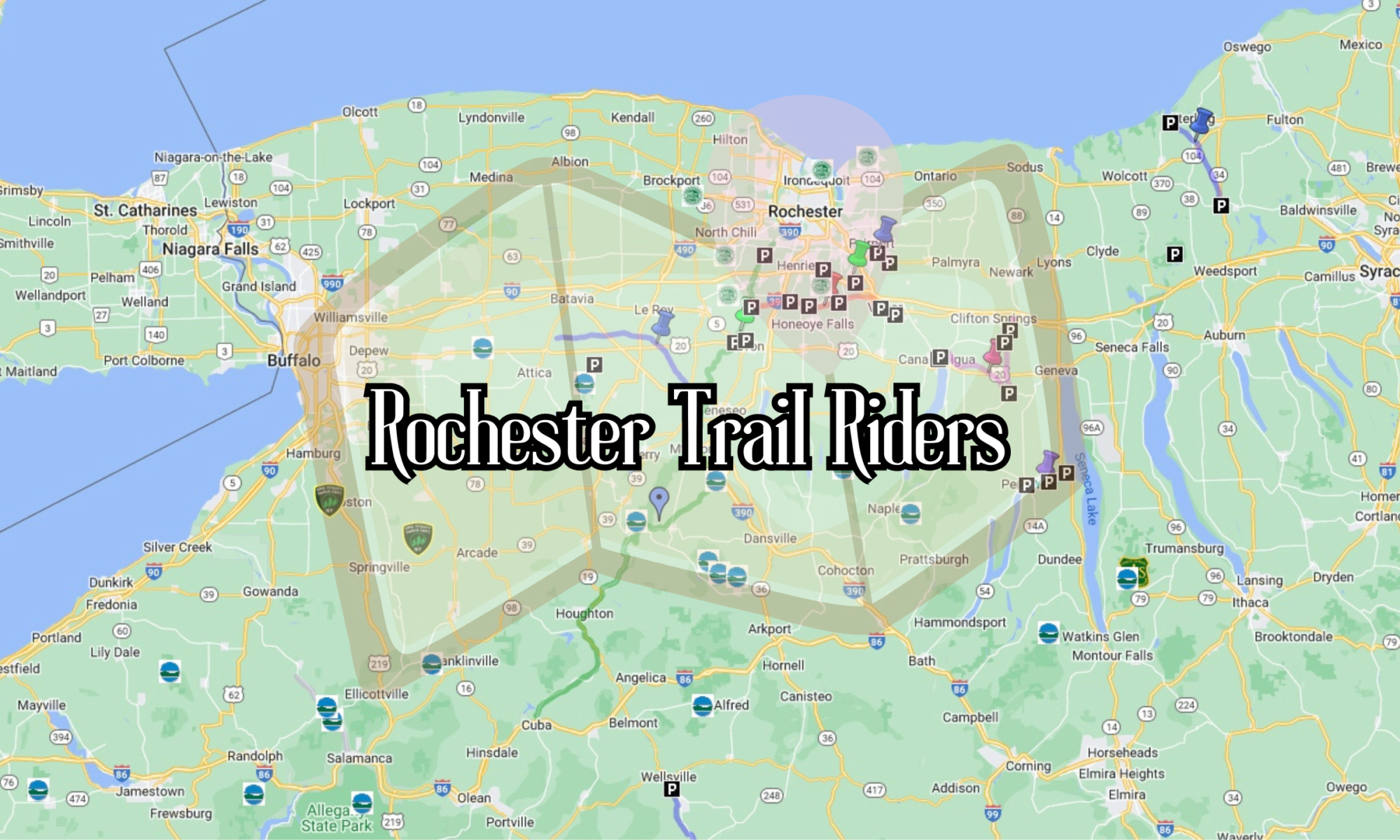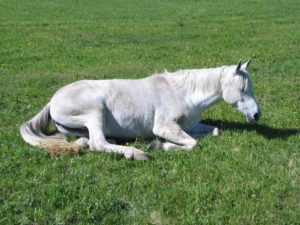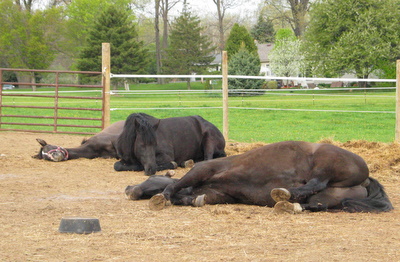 In this podcast episode, we take you on a captivating journey through Mendon Ponds Park, the largest in Monroe County, known for its stunning glacial geology and rich natural habitats. We explore the park’s 30 miles of trails that cater to both riders and carriage drivers, offering diverse experiences from leisurely paths to more challenging terrains. We touch on the practical aspects of visiting the park, like ample parking facilities and navigating the trails. The episode is filled with personal anecdotes and tips for a fulfilling visit, whether you’re on horseback or enjoying a carriage ride. We also share encounters with local wildlife, the park’s unique features, and the sense of community among visitors. Join us as we reveal why Mendon Ponds Park is a must-visit destination for outdoor and equestrian enthusiasts.
In this podcast episode, we take you on a captivating journey through Mendon Ponds Park, the largest in Monroe County, known for its stunning glacial geology and rich natural habitats. We explore the park’s 30 miles of trails that cater to both riders and carriage drivers, offering diverse experiences from leisurely paths to more challenging terrains. We touch on the practical aspects of visiting the park, like ample parking facilities and navigating the trails. The episode is filled with personal anecdotes and tips for a fulfilling visit, whether you’re on horseback or enjoying a carriage ride. We also share encounters with local wildlife, the park’s unique features, and the sense of community among visitors. Join us as we reveal why Mendon Ponds Park is a must-visit destination for outdoor and equestrian enthusiasts.
Carlton Hill Multiple Use Area
Links
Google Maps Coordinates to Parking – Note, come up from the south to avoid the bumpy Bank St Rd
Stats
Ride or Drive – Ride Only
Trail Level – Advanced- steep hills, narrow paths, many creek bed crossings
Parking – Moderate – Will need to back into a space to allow room for others
Distance – 9 miles of trails – Get Printable Map Here
Footing – Fields, packed dirt, some gravel, roots, rocks, water crossings
Challenges – Challenging and fun trails, think safety first, ride with a friend if possible and stay on the trails! Recommend to condition you and your horse before going here. Continue reading “Carlton Hill Multiple Use Area”
Trail Tails: Installing Paddock Paradise (Part 1)
A while back I showed you my plans of constructing a Paddock Paradise for my horses. Now that the ground has thawed and with the wonderful cool working weather we had this weekend I was hard at work.
The key to getting my track in place is to complete the permanent fence all the way around the pasture. Way back in 2009 2 legs of the fence were completed and all the holes drilled for the 3rd leg. Unfortunately that’s when things came to a halt thanks to complications of my day job. For 2 years the fence posts sat tilted unpacked in their holes until this weekend. I’m happy to report the 3rd leg of the fence posts is now DONE!
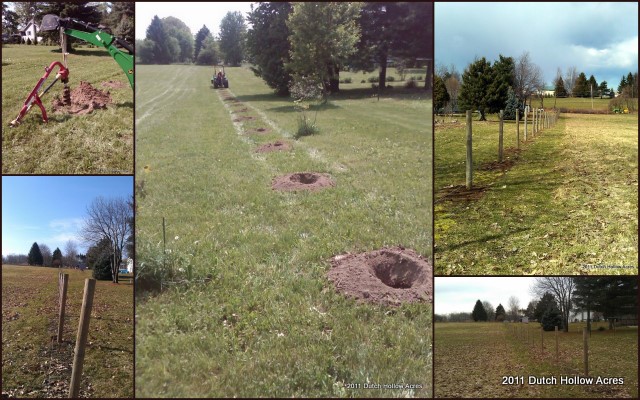
With the far line finally completed I was able to set up 1 portion of my “track.” The horses now have the ability to run from the mud paddock, down along the driveway and into the far pasture. Of course if they need shelter, water, or minerals they have to come all the way back up into the mud paddock area.
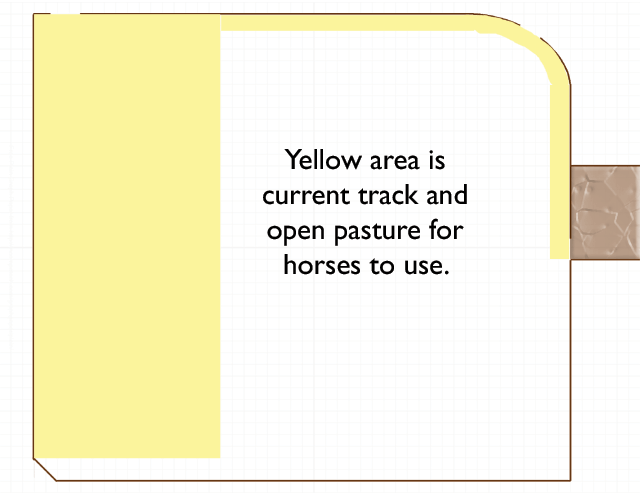
Video of the horses running on their new partial track!
Trail Tails Tuesdays!
Got horses? Got Blog? Why not share your adventures with us every Tuesday!
This preview will disappear when the widget is displayed on your site.
For best results, use HTML mode to edit this section of the post.
Tips and Tricks – Shedding Season
Ah spring! If you’re a horse owner this means shedding season. Here’s some tips on how I make it through this hairy season.
1. Blanket! I turn my horses out in a nylon sheet or rain sheet. Not only does it help keep the mud off their coats but as they move the nylon helps shine up their coats and get the hair nice and loose.
2. Human clothing – There’s hair everywhere when you brush out your horse, I am covered in it by the end of the grooming session so I usually keep a light windbreaker hanging in the barn. Again, nothing sticks to nylon so it keeps me and my clothes hair free
3. Tools – I use 4 tools to get the job done
a. Metal shedders rake – gets all the mud clumps and the loose hair up
b. Oster coarse curry comb – I love the ergonomic feel of this comb and it keeps my hands from getting over tired. I also like the round disks of hair that I pull off the comb, they are perfect for spreading around the farm for birds to build their nests with
c. Stiff bristle body brush – One the curry comb doesn’t seem to bring up much hair I bread out the body brush – The trick to keeping a body brush clean and free of dust/hair is to rake it across your shedders rake after each stroke. It seems time consuming but you’ll get more hair and dust out of your horses coat if you do.
d. Horse hair brush – I don’t always do this step but the horses really seem to like it. After all that raking, combing and brushing a once over with a soft horse hair brush is relaxing and pleasant to the horse.
4. Some folks like to give a good bath and try to shampoo the hair out of their horse’s coats. I personally prefer brushing it out. I’m not a fan of picking horse hair clogs out of the drain, it’s much easier to brush it out of the barn and let the birds have at it.
5. Clipping – One of my horses is prone to sweating when worked. Come spring I give him a neck and belly clip to help him cool off, sometimes I get carried away and do a full hunt clip. Now if you really want to avoid de-shedding your horse clipping is the easy way out. Just be sure to do blanket management until the weather warms up.
I’d be interested in hearing your tips and tricks in dealing with the shedding season.
Banner Photo Contest
Hi RTR readers!
What do you think of our new photo banner?
Want to see your photo on our banner? Each month I will randomly choose 3 new photos to rotate through our banner and one of them could be yours!
Details:
- Photos must be high quality .jpg format. The higher the quality photo the better!
- Email your photo to trails@RochesterTrailRiders.com
- Include names of persons and horses in photo and brief description of when/where the photo was taken.
- New photos will be chosen on the 1st of each month. Entries for next month’s banner must be submitted no later than 25th of the month.
- Photos may be edited and altered in order for them to fit in the banner area.
Trail Tails: Saying Goodbye
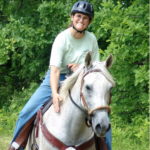 February 26th 2007 a date which will forever be stuck in my mind. Why? That was the day I had to make the awful decision to euthanize my mare Hobbie. Here’s our story on how we got to that point and what planning had to be one.
February 26th 2007 a date which will forever be stuck in my mind. Why? That was the day I had to make the awful decision to euthanize my mare Hobbie. Here’s our story on how we got to that point and what planning had to be one.
Mahaba Ghinwa (Hobbie) was a purebred Egyptian Arabian mare who unfortunately found herself unwanted by her previous owner and was abandoned at the farm where I worked, bored unpaid. On January 1st 2006 I paid off her back board and brought her home to my farm. What a great little mare, she was only used as a brood and had little handling. I worked with her and taught her to ride and drive and she soon became a favorite. So much so she was my mount on our wedding day that October.
Unfortunately 1 year to the day disaster struck. I remember it all too well. January 1st 2007 was an seasonably warm day and the ground was bare and dy. I decided to let the horses out into the big field to stretch their legs since they have been stuck in the mud paddock for a few weeks. I watched them run, buck, kick up for a while and then they all settled in and munched on some grass so I went about my day.
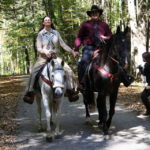 4pm that evening I rang our dinner “cow bell” and waited for the thundering hooves that usually followed but not this night, I only got one horse who sauntered up. Stepping out into the paddock I could see Hobbie out in the field, ears pricked forward and she whinnied out for me. I called to her and she bobbed her head up and down and whinnied again. I knew something was wrong and made my way out to her.
4pm that evening I rang our dinner “cow bell” and waited for the thundering hooves that usually followed but not this night, I only got one horse who sauntered up. Stepping out into the paddock I could see Hobbie out in the field, ears pricked forward and she whinnied out for me. I called to her and she bobbed her head up and down and whinnied again. I knew something was wrong and made my way out to her.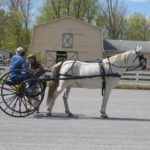
As I grew closer I could see there was a problem. Her left knee was the size of a soccer ball and she couldn’t move. I tried to tempt her forward to get her back to the barn but she wouldn’t budge and I couldn’t blame her. I called the vet and remained as calm as I could, explaining what I saw.
The vet was only 20 minutes away but it felt like an eternity. I had been in this position before and after much crying and tears I had actually come to the decision to put her down. The vet however had different plans.
The vet drugged her, applied a split and we managed to get her back to the barn. Xrays were taken, ice applied and wraps. Not much to do now than sit and wait.
The xrays showed she blew out her knee alright and there wasn’t much holding it together any more, there were even small fractures of bone floating around from the trauma. The vet convinced me to hold off making an official decision until we heard back from Dr. Dean Richardson. Does that name sound familiar? It should. He was Barbaro’s surgeon. Unfortunately, this all happened while he was working on Barbaro and his reply back was delayed because of it.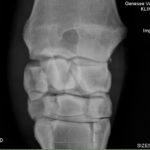
His reply came about the same time a major turning even occurred that sealed my mind. Poor Hobbie finally told me the only way she knew how that she didn’t want to be stuck motionless for the rest of her life. While I was mucking out her stall she made a break for it, jumped a gate and ended up belly deep in snow before the pain became so great her body shut down and she couldn’t move any more. She just stood there, buried in snow shaking from the pain of her ordeal. I managed to get her back inside, gave her some pain medication and called both my husband and the vet. Today was the day, I couldn’t take it emotionally anymore and keeping her confined to a stall in such pain was not fair to her.
But now what? It’s February, the ground is frozen and there’s 2 feet of snow to dig through. At the time we didn’t have the equipment to bury a horse on our own.
I talked to the vet and there were 3 options;
- Hire a backhoe to come to us and bury her on our property
- Trailer her to a crematorium
- Cornell does “group” cremations of “whole” animals
- Rush Pet Cemetery will cremate your horse in “pieces” because their crematorium isn’t large enough for a whole animal
- Have her buried in a pet cemetery like the one in Rush
#1 didn’t work because we had not lived on our property long enough to know where we could bury a horse not to affect our water supply. Cremation was expensive and Cornell was quite a drive and I didn’t like the idea of chopping her up to accommodate a smaller crematorium.
That left working with Rush Pet Cemetery to have her buried there. What nice people. They made a very hard time as stress free as it could be and best of all it was affordable.
We loaded Hobbie up in the trailer and opted to meet the vet at the cemetery. I won’t bother you with the details but there was much crying, hugs and saying goodbye.
It was the longest ride home with an empty trailer and to this day I still can cry at the thought of her. She was a great horse and I will miss my little Hob Gobblin.
What caused her busted knee? No clue, I walked every inch of that field and there’s not so much as a divit or rock. She just must have stepped wrong.
Trail Tails
The Tuesday Horse Blog Linky
Promote Your Horse Blog
Sharing Your Blog Link
Please use your FULL perma-link URL not just your blog domain name.
Example Bad: http://www.RochesterTrailRiders.com
Example Good: http://www.rochestertrailriders.com/2010/12/winter-fun-with-horses/
Pay it back! All we ask is that you pay it back and place either a link back to RTR in your post or use the following button in your post.
Please comment and remember to leave comments on other folks pages too! Everyone loves feedback.
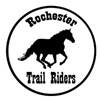
This preview will disappear when the widget is displayed on your site.
For best results, use HTML mode to edit this section of the post.
Do Horses Sleep Standing Up?
The truth is, no. Horses do not sleep standing up. Adult horses will rest standing up and look quite out of it but they cannot “sleep” standing up. For a horse to actually achieve REM sleep they must lie down and be stretched flat out on their sides. REM (Rapid Eye Movement) sleep is a deep dreaming sleep and a horse standing up with locked legs would surely fall right over or sleep walk/run.
How much sleep do horses get? With my small herd I’ve noticed many different personality types and their sleep habits. Here is how each of my horses sleep.
Jasper: I have yet to see this old boy sleep during the day. He’s middle of the herd hierarchy and spends most of his day trying to make it to the top of the pack. Come night fall he finds his “spot” and conks out for a good 30 minutes and seems to get 2 long sessions in overnight.
The General: This poor boy is at the bottom of the food chain and always gets picked on. He really wants his beauty sleep and when he can he lies down and tries to get a few Z’s Since his sleep is usually interrupted I find he sleeps more frequently in 24hrs but for shorter periods of time maybe only 5-10 minutes.
Fay: This cute little filly is higher up on the latter than the 2 previous boys and is 1 of 2 girls in the group under the watchful eye of the herd leader, Goliath. Being young she resorts to being the snot that likes to wake The General up and chase him around. She rests throughout the day and I only see her take 1 lie down nap at night. Come warm spring weather she does lie down more frequently and really enjoys her sun baths.
Cotton: Cotton is 2nd highest on the food chain and the beloved girl friend to Goliath the leader. She has the ability to nap whenever she wants, where ever she wants and for as long as she wants. I notice she chooses to only take maybe 1-2 short 5-10 minute naps during the day and one long one late morning just before sunrise in the safety of her stall. I’m usually the one who wakes her up in the morning.
Goliath: The leader of the pack and the laziest horse in the group. Since he is the big cheese no one ever bothers him and he can sleep for as long as he wants. Most vets will tell you that a horse that is lying down longer than 30 minutes should be checked on because the weight of the animal will start to crush its innards. Apparently Goliath could care less about science and takes record breaking 1-2hr naps. I’ve gone out and poked him on several occasions just to make sure he’s doing ok. He appeases my pestering by rolling over and lying on the other side instead. I’ve noticed that the rest of the herd usually takes the “it’s time to sleep” queue from Goliath. Jasper is the one who stands guard while the others get a few precious minutes in.
Until recently I wondered if horses legs would fall asleep like ours do when they fold them up under themselves to sleep. Even after a long nap they always seem to stand right up and walk off without so much as a hitch in their gait. That was until just a few weeks ago. I had woken Cotton up from her morning slumber and she bolted up to a standing position. This morning something was off, she kept picking up her hind right leg and shaking it and then would pound it on the floor. Ah ha! Her hind leg had fallen asleep! After a few good shakes and stomps on the ground the pins and needs must have subsided and she put full weight on it and came over for treats.
(Left to Right) Faye, Cotton, Goliath
Winter Riding Tips – Hoof Care
So you want to enjoy your horse during the winter months but every time you hit the trials your horse’s hooves fill up with hard snow making the bottom of their feet look like a snow cone. Not the safest of situations.
There are several ways to keep the snow from packing up in your horse’s feet
Cooking or Silicone Spray – This offers a temporary solution and is really easy to apply. Just pick up the foot, brush it clean and spay. Usually this method will prevent the snow from packing up in the hoof for 5-10 minutes.
Full Hoof Snow Pad – Made of hard plastic
Pros – You will never have to worry about snow building up in the hoof, period!
Cons – You can’t see the hoof! What’s going on under there
Silicone Snow Pad – A ring of silicone that fits between the hoof and the shoe.
Pros – you can see the bottom of the hoof and clean under the pad
Cons – This pad still can allow snow to build up if it packs up under the pad and is horrendous to clean during mud season
Horse Hoof Boots – My personal favorite Choose your style and manufacturer there’s tons of them out there. Your horse can still be turned out barefoot and strap the boots on when you need them. I personally like the Old Mac’s because of the hiking boot type tread that is on the bottom which gives better grip.
